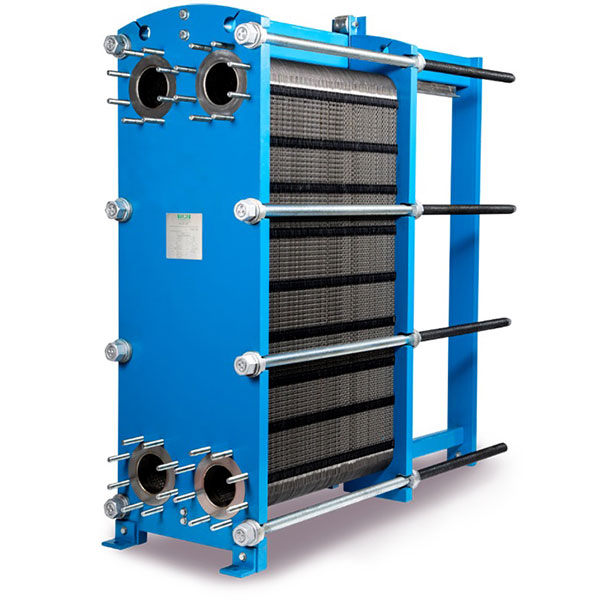The Heroes of Heat Transfer: The Critical Role of Heat Exchangers

Throughout the modern world, the efficiency of energy transmission plays a critical role in various industries, yet often remains unrecognized. At the heart of this process are heat exchangers—extraordinary devices that allow the effective transfer of heat between fluids without intermingling them. From power plants to HVAC systems, the implementations of heat exchangers are wide-ranging and significant. They serve as the concealed engines driving energy efficiency, cutting operational costs, and promoting sustainability in countless processes.
Grasping what a heat exchanger is and how it works can illuminate their importance in our daily lives and industries. These devices come in various forms, each designed to meet specific needs, whether it be a shell and tube design or a more streamlined plate heat exchanger. As we investigate the different types, their uses, and the future trends in heat exchanger technology, it becomes clear that these underappreciated heroes deserve more recognition for their critical contributions to energy management and environmental sustainability.
Categories and Applications of Thermal Exchangers
Heat exchangers are categorized into several types, each designed to meet specific industrial needs. The most common types include shell and tube, plate, air-cooled type, water-cooled type, and spiral thermal exchangers. Shell and tube heat exchangers utilize a series of tubes, one set carrying the heated fluid and the other carrying the chilled fluid, facilitating heat transfer between the two. Plate thermal exchangers, on the contrary, are made up of multiple thin plates layered together, providing a broad surface area for efficient heat transfer. Go to this website offers unique benefits, making it crucial to select the right kind based on the application.
The applications of thermal exchangers are vast and varied. In the heating, ventilation, and air conditioning sector, they have a crucial role in maintaining pleasant indoor temperatures by exchanging thermal energy between air and fluids. Electricity generation facilities rely on thermal exchangers to convert energy efficiently, using them in condensers and coolers. In the chemical industry, these systems assist in controlling the temperature of chemical processes, ensuring optimal output quality while maintaining safety standards. The food and beverage industry also utilizes heat exchangers for pasteurization and cooling processes, highlighting their importance in maintaining product integrity.
Moreover, heat exchangers are integral to sustainable energy systems, such as photovoltaic and geothermal installations, where they improve energy capture capabilities. The automotive sector employs thermal exchangers to control engine temperature, ensuring performance and safety. As industries strive for greater energy efficiency, the function of thermal exchangers keeps to grow, showcasing their essential contribution to eco-friendly practices.
Efficiency and Upkeep of Heat Exchangers
Maintaining the efficiency of heat exchangers is crucial for optimal functionality in various industrial applications. Efficient heat transfer relies on the purity and functionality of the heat exchanger surfaces. Fouling, which refers to the buildup of unwanted materials on heat transfer surfaces, can significantly impair efficiency by reducing heat transfer rates. Routine cleaning schedules and the use of appropriate cleaning techniques are critical to minimize fouling and ensure that heat exchangers function at their best. Tracking the thermal performance and pressure drops can also help in determining when maintenance is needed.
Regular maintenance not only extends the lifespan of heat exchangers but also enhances their energy efficiency. Implementing a preventive maintenance program can include visual inspections, performance testing, and monitoring of operating pressures and temperatures. Such preventive measures can help identify early signs of deterioration or failure, allowing for timely repairs that can prevent more extensive and costly downtime. Additionally, digital monitoring technologies have made it easier to track performance metrics in real-time, further improving maintenance strategies.
When selecting heat exchangers for specific applications, it is essential to consider not just their initial efficiency but also their maintenance requirements over time. Different designs, such as gasketed plate heat exchangers, offer simpler access for cleaning and servicing compared to alternative types. Choosing materials and designs that facilitate maintenance can lead to reduced operational costs and increased reliability. Overall, a considerate approach to both the efficiency and maintenance of heat exchangers is vital for maximizing their performance and ensuring their long-term viability in multiple sectors.
Developments and Future Trends in Heat Exchange Systems
As industries aim for enhanced energy-saving measures and environmental responsibility, innovations in heat exchanger technology are becoming increasingly vital. One of the most noteworthy advancements is the progress of microchannel heat exchangers. These units have channels that are considerably tinier than those found in standard systems. This space-saving design offers improved thermal exchange capability while minimizing the refrigerant charge, resulting in decreased energy expenses and reduced environmental impact.

Another encouraging trend is the incorporation of smart technology into heat exchangers. With the emergence of the Internet of Things, manufacturers are enabled to embed smart sensors and real-time monitoring solutions. These developments allow for real-time information gathering and assessment, which drives superior servicing procedures and enhanced productivity. https://hedgedoc.k8s.eonerc.rwth-aachen.de/DPuPWULaTu2QNGZm8TH2Gw/ , supported by analytical insights, can help prevent breakdowns and lengthen the lifespan of thermal systems, making them even more dependable.
Finally, the investigation of innovative materials is set to change heat exchanger design. Innovations such as next-gen composites and graphene-based materials offer key benefits in terms of thermal efficiency and resistance to corrosion. These substances can potentially minimize the total weight of heat exchangers while sustaining or enhancing their performance. As https://output.jsbin.com/cojexepomu/ , we may observe a revolutionary series of heat exchangers that are lighter, more efficient, and more qualified to fulfill the requirements of modern applications in different fields.
